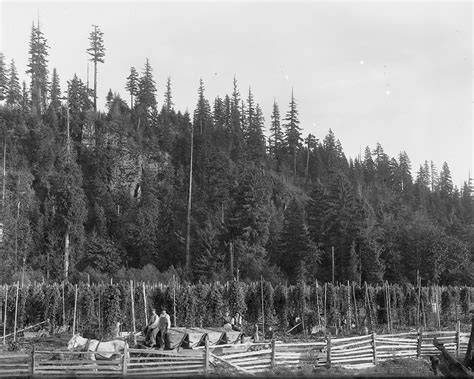Imagine two Danish citizens born in mid-19th century Denmark. Conditions are hard in Denmark at this time, and by the 1880s they both decide to immigrate to the United States, and eventually to Enumclaw, Washington where an established Danish community already exists.
Andrew Nielsen was born in 1859, followed by Anna Jensen in 1860. They were married in Tacoma in 1889. Their first child died on the third day of its life. Two other children were born in Tacoma: Dorthea, born in 1892 and dying in 1917, and Nels Julius, born in 1894 and dying in 1935.
The Nielsen family moved from Tacoma to Enumclaw in about 1895. They lived on property that is now part of the Enumclaw Golf Course. Two more children would be born there: Jens Einer, born in 1896 and dying in 1957, and Kathrine Marie (Basteyns), born in 1898. Kathrine would tell the family story shortly before dying in 1974. (“The Written Account of Nielsen, Andrew and Anna Jensen Nielsen. 2/23/73”: EPHS museum)
In 1899 the family of four moved to Osceola, west of town, to a 43-acre tree-covered parcel. They became productive dairy farmers. They heated their house with wood. Their house had two rooms and no indoor plumbing.
Four more children would be born there, beginning in 1900. That fourth child died in 1909 at the age of 9. The rest lived into their sixties and seventies.
That farmhouse must have been cramped, because according to Kathrine in her memoir, her mother’s way of coping was to repeat: “If there is a room in the heart there is always room in the house.” Eventually they added rooms, including a parlor. Because that room was “just for company”, Kathrine observed that the door was usually closed. As time passed, an extra storeroom was built along with a front porch, a second story, and a storage room.
How was a dairy farmer able to clear the land of trees to create pasture and hay to feed his cattle? “Hard work, horses, and blasting powder.”
Imagine 43-acres of old-growth trees. Often, the roots had to be dug around and then chopped off to remove the tree. On one occasion, cottonwoods were cut down, sawed into four-foot lengths, split, and dragged by a horse team to be piled by the side of the road. They were carted to the Enumclaw railroad station to be shipped to Tacoma. The roots and brush were dragged into a pile, allowed to dry, and then burned. The land could then be plowed and seeded.
Before the blight of the 1890s, the land in Osceola was used to grow a lot of hops for beer. Whole families would pick the hops, bringing in extra money. Muckleshoots, who were excellent pickers according to Kathrine, would camp in the fields. Sometimes, the start of school was delayed until the hop season ended.
Surprisingly, there were a lot of homeless men who would pass through Osceola and the Nielsen farm on the way to Buckley. They were called “hobos,” “tramps,” or “bums” then.
According to Kathrine, “For the most part they were a likable sort and folks never turned any of them away.” They were always men who would offer to chop wood or do other chores to get a meal. Sometimes they would ask for a place to sleep. They were almost never allowed to sleep in the barn lest their smoking ignite the hay stored in sheaves and burn it down.
One man who ate with them appeared suspicious, apparently looking around at what he could steal, but he was allowed to sleep in the spare bedroom anyway. Kathrine’s mother first removed father’s good clothes stored there and put them in their bedroom. Normally, the children did not lock their bedroom doors in case of fire, but on this occasion, her mother gave them keys to lock their doors.
The next morning, the man ate a big breakfast. Father asked the man if he wanted to weed the rhubarb. After one spade full of dirt, he decided he didn’t want to work, and left without even a “thank you.”
Kathrine Nielsen Basteyns has other interesting stories to tell of early 20th century Enumclaw. They will be continued next month.


